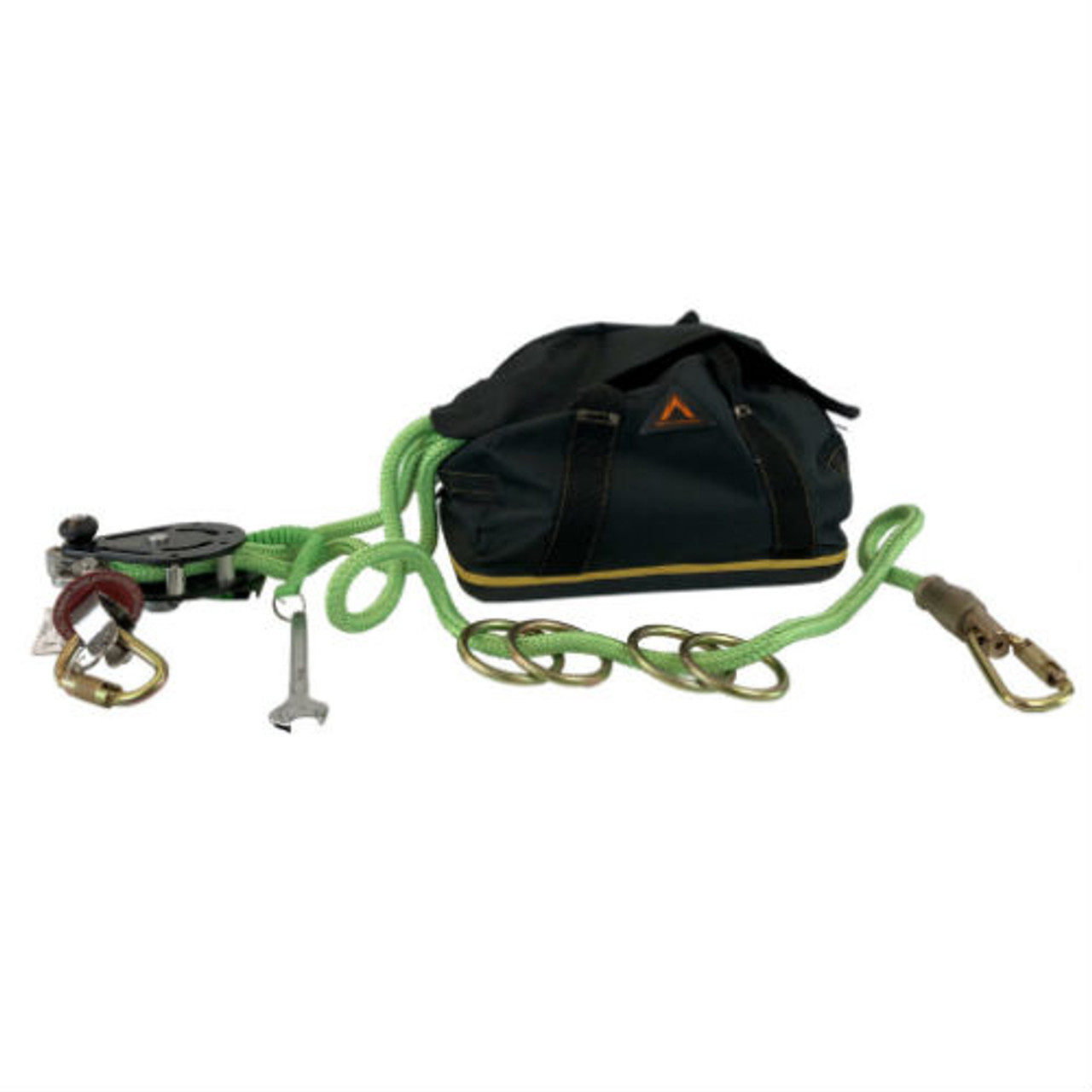Horizontal Lifelines
Posted by Howie Scarboro - CEO Fall Protection Distributors, LLC on Oct 14th 2022
Horizontal lifelines are an important part of any fall protection system. They provide a means of restraining workers who may fall and help to protect them from serious injury. In this blog post, we will discuss horizontal lifelines in detail. We will answer the question "What is a horizontal lifeline?" and explain when they should be used. We will also provide information on the different types of horizontal lifelines available on the market today. Keep reading to learn more about horizontal lifelines and how they can help keep you safe at work.

What Are Horizontal Lifelines?
A horizontal lifeline is a horizontal cable or rail that is installed between two points. The horizontal lifeline provides a means of restraint for workers who may fall, and it helps to protect them from serious injury. When used properly, horizontal lifelines can be an effective fall protection system. This image above is a Malta Dynamics HLL3001 100' 4 man Horizontal Lifeline. This is a version that we currently stock and is our best seller.
When Are Horizontal Lifelines Used?
Horizontal lifelines are typically used in construction and industrial applications where there is a potential for workers to fall from heights. They are also commonly used in roofing applications, as well as in other situations where workers may be exposed to fall hazards. Horizontal lifelines can be installed on existing structures or they can be part of a new construction project.
What Are The Different Types Of Lifelines?
There are two basic types of horizontal lifelines: rigid and flexible. Rigid horizontal lifelines are typically made of steel or aluminum, and they are installed between two points that do not move relative to each other. Flexible horizontal lifelines, on the other hand, are typically made of cable or webbing, and they are designed to allow for some movement between the two points.
Which Type Of Lifeline Is Right For Me?
The type of horizontal lifeline that is right for you will depend on your specific application. If you are working in a construction or industrial environment where there is a potential for workers to fall, a rigid horizontal lifeline may be the best option. If you are working in a roofing application or other situation where workers may be exposed to fall hazards, a flexible horizontal lifeline may be the better choice.
No matter which type of horizontal lifeline you choose, it is important that you follow all manufacturer’s instructions for installation and use. Additionally, always make sure that your horizontal lifeline is properly inspected and maintained. By following these simple guidelines, you can help ensure that your horizontal lifeline will provide years of safe, reliable service.
How Are Horizontal Lifelines Installed?
Horizontal lifelines can be installed in a variety of ways. The most common method is to install them on existing structures, such as roof anchors. However, horizontal lifelines can also be installed as part of a new construction project.
When installing horizontal lifelines, it is important to follow all manufacturer’s instructions. The first step is to read the manual and familiarize yourself with the horizontal lifeline system. Next, you will need to gather the necessary tools required to set up your lifeline. Finally, you will install the horizontal lifeline according to the manufacturer’s instructions.
Installing horizontal lifelines can be a simple process, but it is important to follow all manufacturer’s instructions carefully. By doing so, you can help ensure that your horizontal lifeline will provide years of safe, reliable service.
Conclusion
In conclusion, horizontal lifelines are horizontal cables or rails that are installed between two points. They provide a means of restraint for workers who may fall, and they help to protect them from serious injury. Horizontal lifelines are typically used in construction and industrial applications where there is a potential for workers to fall from heights. There are two basic types of horizontal lifelines: rigid and flexible. The type of horizontal lifeline that is right for you will depend on your specific application.
If you have any questions about horizontal lifelines, or if you would like to learn more about fall protection systems, contact the experts at Fall Protection Distributors today. We are always happy to help!

